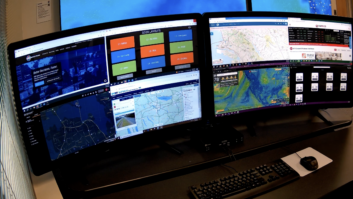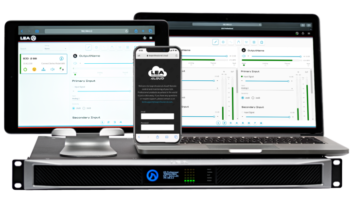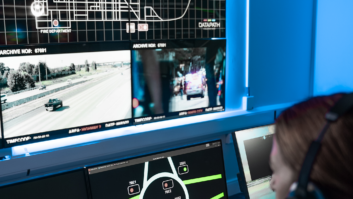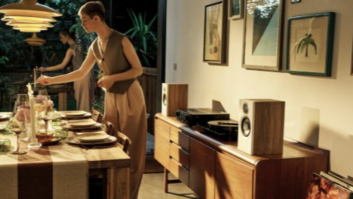Weary from a year in lockdown, consumers are looking for more than just system control from their smart home technologies. Personalisation, ease of use and superior aesthetics are increasingly sought after.
Driving this narrative is a desire for wellness, a movement that’s been rising in other consumer facing businesses for some time.
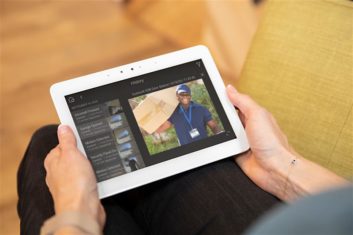 “Wellness technologies get headlines but are less understood than the traditional AV skills,” Mal Fisher, CTO of URC distributor AWE told us. “That usually puts them at the end of the sales discussion. It’s a shame. Integrators have the key electro-technical abilities to work in this sector, but there’s a perception that it’s not our market.
“Wellness technologies get headlines but are less understood than the traditional AV skills,” Mal Fisher, CTO of URC distributor AWE told us. “That usually puts them at the end of the sales discussion. It’s a shame. Integrators have the key electro-technical abilities to work in this sector, but there’s a perception that it’s not our market.
“The integrator community is great at throwing itself at a challenge, and any companies that weren’t already heavily into lighting or security should have taken all the free manufacturer and CEDIA training they could!”
Recipe for success
Wellness is a recipe that integrators already do – networking, lighting, audio – but for integrators to deliver wellness, and it requires collaboration, says Walt Zerbe, senior director of technology and standards, for trade body CEDIA.
“Integrators need to develop their relationships with the other trades – lighting designers, HVAC installers, plumbers – in order to become the general contractor who coordinates it all and then sells it as a holistic solution.”
There are so many elements that form wellness as a solution, explained Zerbe. “Integrators need to spend more time on the discovery side to really understand what the customer’s needs are, who the family members are, what each of them require, is anyone working or learning from home… the list goes on. It takes an increased amount of study to prescribe a wellness solution for each customer, as it’s very personalised – but there’s no doubt that it’s a giant opportunity for integrators to capitalise on.”
Such personalisation is the heart of Control4’s new OS 3 release.
“We’ve found that an increasing number of consumers don’t want the hassle of installing an automation system, but they do want some autonomy to make the system work the way
they want it to,” Kordon Vaughn, SnapAV VP of marketing, campaigns and creative explains.
“This autonomy actually helps the home professional sell the job to their prospective customer. Control4 systems can be remotely accessed and managed through Composer Pro,
the Control4 configuration software for OS 3.
This offers our partners the ability to service the system without going on-site, a big deal in both a pandemic and post-pandemic world. Additionally, professionals can use OvrC to manage other devices.”
Reflecting the need of enhanced smart usability, Control4 has just released the Chime Video doorbell, and Neeo remote.
Ringing the changes
The booming popularity of do-it-yourself video doorbells shows that there’s significant demand for this category, Kordon Vaughn, SnapAV VP Marketing told us. “Homeowners want to see who is at the door before they answer it, especially while away. As the use of these video doorbells grows, so too has the desire for them to be connected to other smart home devices.
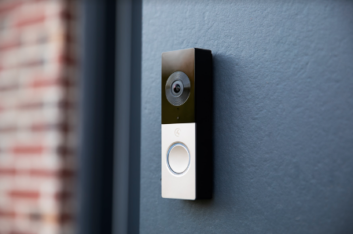 “That’s what Control4 Chime offers: it marries security and automation to a level that has never been done before. This elevated functionality allows the customer to easily prompt other automated events without having to launch a new app. Users can determine what actions they want to occur when motion is detected or the doorbell is pressed. It’s entirely customisable, transforming the doorbell’s role in the smart home to deliver the experience homeowners want.”
“That’s what Control4 Chime offers: it marries security and automation to a level that has never been done before. This elevated functionality allows the customer to easily prompt other automated events without having to launch a new app. Users can determine what actions they want to occur when motion is detected or the doorbell is pressed. It’s entirely customisable, transforming the doorbell’s role in the smart home to deliver the experience homeowners want.”
Vaughn says the Control4 Neeo remote appeals to different reasons.
“Firstly, it resonates with customers that value simplicity, elegance and beautiful technology. It’s also preferred by customers that considered using their phone to control their smart home experience but realised that they actually need some hard buttons like ‘volume’ and ‘mute.’ It’s also been loved by customers that are intimidated by a lot of buttons. They find that Neeo makes the smart home experience much more approachable.”
Pandemic switch
CEDIA’s Walt Zerb says the pandemic has flipped the script when it comes to selling security products.
In the past, integrators would have to really push security onto the customer, whereas now, the pull is coming from the end users,” he told us. “Security is definitely up big time.”
Lighting has increased as well, with interest moving beyond basic control. “We are seeing interest in colour temperature changing, with companies such as Philips Hue bringing awareness to consumers.”
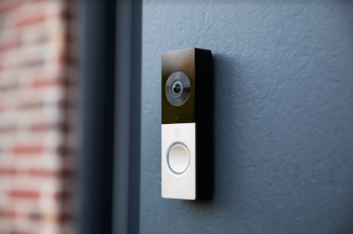 As for smart blinds and shading control, AWE’s Mal Fisher says there’s also a substantial market here for all levels of installation. “Widespread availability of either cabled or retrofit options means that it’s far easier to take benefits such as environmental management to a wider consumer base,” notes.
As for smart blinds and shading control, AWE’s Mal Fisher says there’s also a substantial market here for all levels of installation. “Widespread availability of either cabled or retrofit options means that it’s far easier to take benefits such as environmental management to a wider consumer base,” notes.
“We forget that this industry is still relatively young. Both manufacturers and consumers are hunting for a magic, and reasonably inexpensive, box that does everything we can dream of. Does it exist? I doubt it. If the tech giants with their vast troves of data are unable to produce it, then it goes to show that it’s quite a challenge.
“That’s where the professional integrator needs to step in. Understand that customer’s individual requirements, understand the technologies and be able to pull together the right equipment for the task. Then present that solution in a reliable and user-friendly way. Using the same equipment time after time might have business benefits, but it’s unlikely that your regular solution is the ideal fit for
all your customers.”
Bridging the gap
Attempting to bridge the divide is Crestron Home. The residential system control platform has just
seen its ninth major update released. Included are innovative security solutions and improvements to Sequences.
“Each update adds significant features, as well as support for new products,” Crestron’s Miek Hubert told us. “Sequences have become even more powerful and support randomised delays, so you
can create natural-looking schedules and make your clients’ homes appear occupied even when they’re away.
You can make a randomised sequence to play back lighting and tie it to a scheduled event. Or get even more creative and add shading, TVs and music, for the ultimate lived-in appearance.”
The brand is also now shipping Horizon thermostats, hailed as the first designer and integrator-friendly smart thermostat. The Horizon thermostat is native to Crestron Home, and forms part of an overarching Crestron smart home proposition.
Horizon thermostats complement Horizon dimmers, switches, keypads, and receptacles. Once integrated into the Crestron Home platform, temperature and humidity can be automatically adjusted along with shades and lighting to ensure optimal comfort, convenience, and energy savings, says Hubert.
Smart advice
So what advice would Crestron offer smart home professionals when it comes to selling a more personalised vision to clients?
“Sell the story, not the product,” says Hubert. “People don’t buy a light; they buy convenience and safety. Automated lighting, especially when tied to security, can offer peace of mind, but it also offers a unified experience when combined under one control solution, like Crestron Home. For instance, a ‘Goodbye’ sequence can be created, which locks the doors, turns off the lights and arms the security system. And in ‘Vacation’ mode, you can add sequences of lights and displays turning on and off, blinds opening etc, which makes for a really nice user experience.”
 The future of residential control is actually about native integration, says Hubert. “Having a smart system does not equal having a smart home. People used to be content when they had several smart appliances, different apps communicating with their alarm system, video doorbell or intercom, sound system, thermostat and their lights. But now they realise that this just means replacing the clutter of touch screens on your wall and remotes on your coffee table with a clutter of apps on your phone.”
The future of residential control is actually about native integration, says Hubert. “Having a smart system does not equal having a smart home. People used to be content when they had several smart appliances, different apps communicating with their alarm system, video doorbell or intercom, sound system, thermostat and their lights. But now they realise that this just means replacing the clutter of touch screens on your wall and remotes on your coffee table with a clutter of apps on your phone.”
Simon Buddle, CEDIA instructor, reports “a definite uplift in property renovations, adding an extra room or floor.” In turn, that has led to adding systems in part or whole into existing buildings. “I don’t think there is a specific area or product that has seen an uplift,” he adds. “It’s broader than that.”
Buddle points to KNX as a fully integrated solution. “The KNX protocol provides a complete solution fulfilling the demand. We know that KNX can provide a technical solution to meet any needs, but now we can offer aesthetic choices to meet any interior design requirements.”
It’s this holistic approach that can win business from DIY solutions. Buddle: “Lots of the DIY products are great and serve a particular market segment, however, they remain largely standalone products and companies. KNX can provide everything that a DIY installation can but it can be so much more. The technology integrator also has the required knowledge to design, install and configure robust and secure wireless and wired data networks. That is the communications backbone for any smart home without which nothing works.
For the modern property owner, expectations of smart home technology have never been higher, says Steve Detmer, residential product manager at Lutron.
“Not only do homeowners want a smart lighting system that provides enhanced comfort, convenience and security, the expectation is that this is delivered in a sleek, sophisticated style that meets the aesthetic demands of today’s luxury smart home market. We are seeing early adopters make use of advanced tech such as warm-dim, white tuning and circadian lighting.”
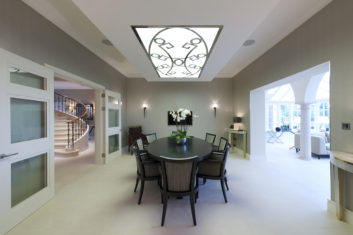 Smart home professionals are continuously looking for ways to streamline the installation and maintenance process to meet the growing demands of the residential control market. One innovative solution is HomeWorks QSX, the next generation of Lutron’s flagship lighting controls.
Smart home professionals are continuously looking for ways to streamline the installation and maintenance process to meet the growing demands of the residential control market. One innovative solution is HomeWorks QSX, the next generation of Lutron’s flagship lighting controls.
It boasts new digital tools designed to allow integrators to manage design and workflow, while enhanced cloud connectivity allows for remote support, all with minimal disruption for homeowners.
“The addition of QSX purposefully makes HomeWorks easier to design, install, activate, program, and service,” says Detmer. “Client expectations continue to rise, and become more complex, with a growing number of other smart devices to integrate with and the standard of home technology and its software always improving.”
“The QSX processor is powerful, with enhanced memory capacity, greater use of the cloud and secure connection to third-party products. This makes the installation process simpler for smart home professionals, and therefore quicker and stress-free for their clients. Essentially, smart home professionals can work with confidence that their project data is safely stored, and that their clients will always have access to the latest capabilities.”
